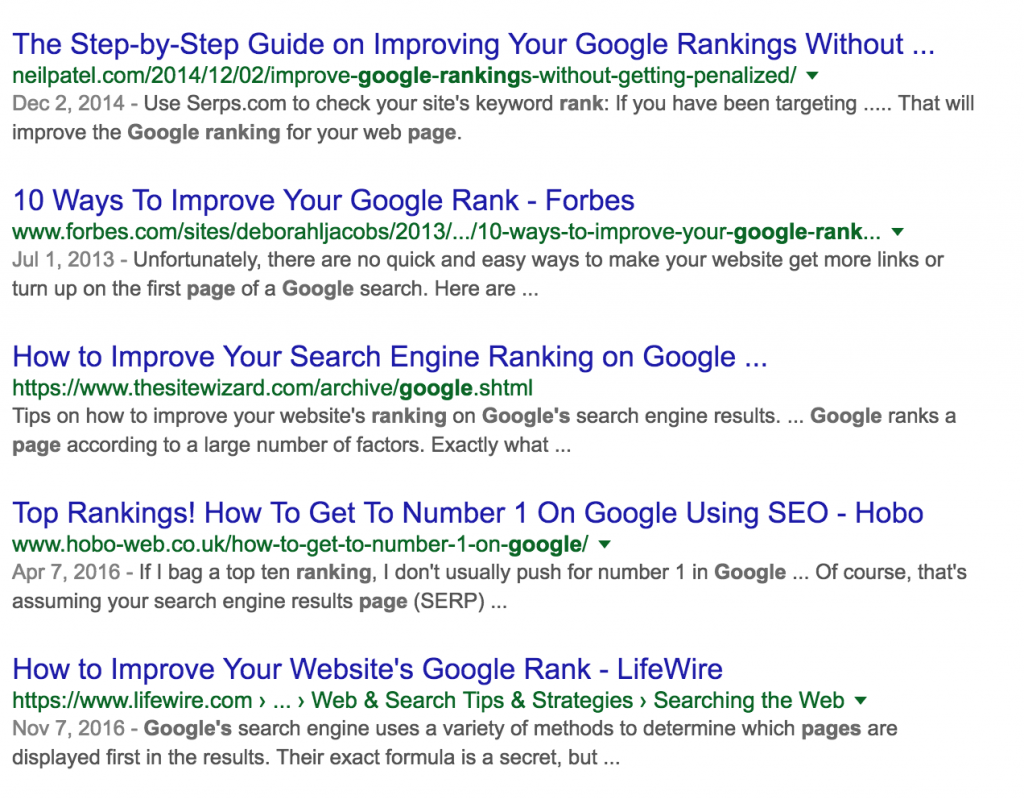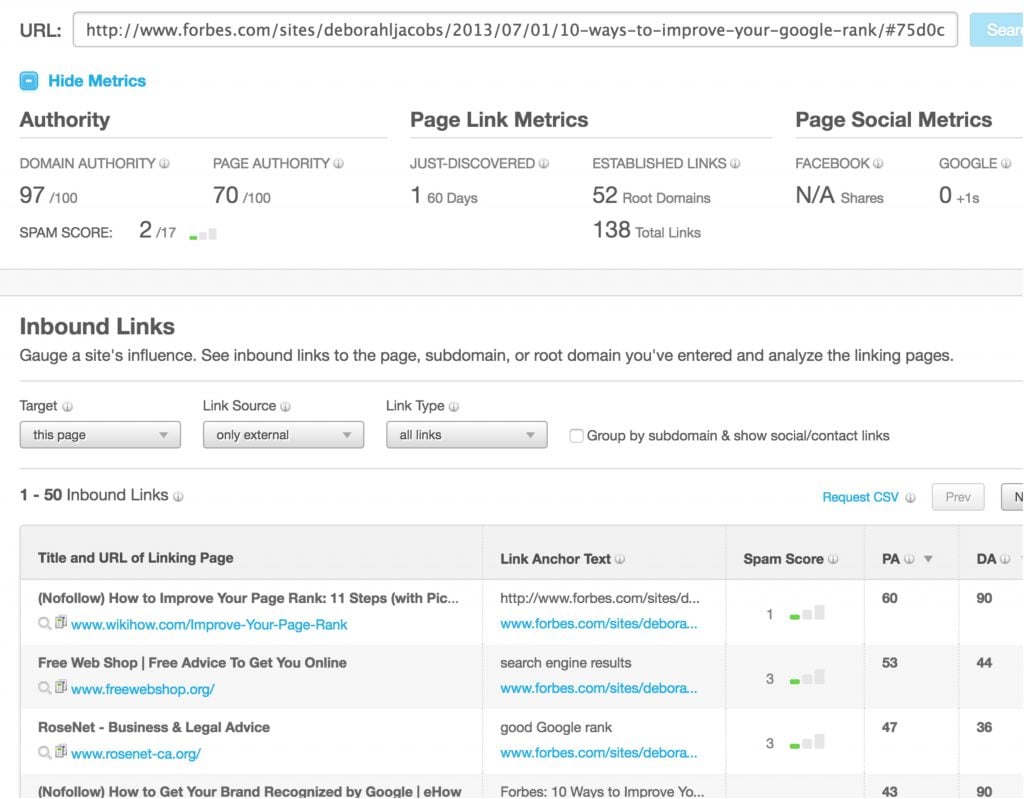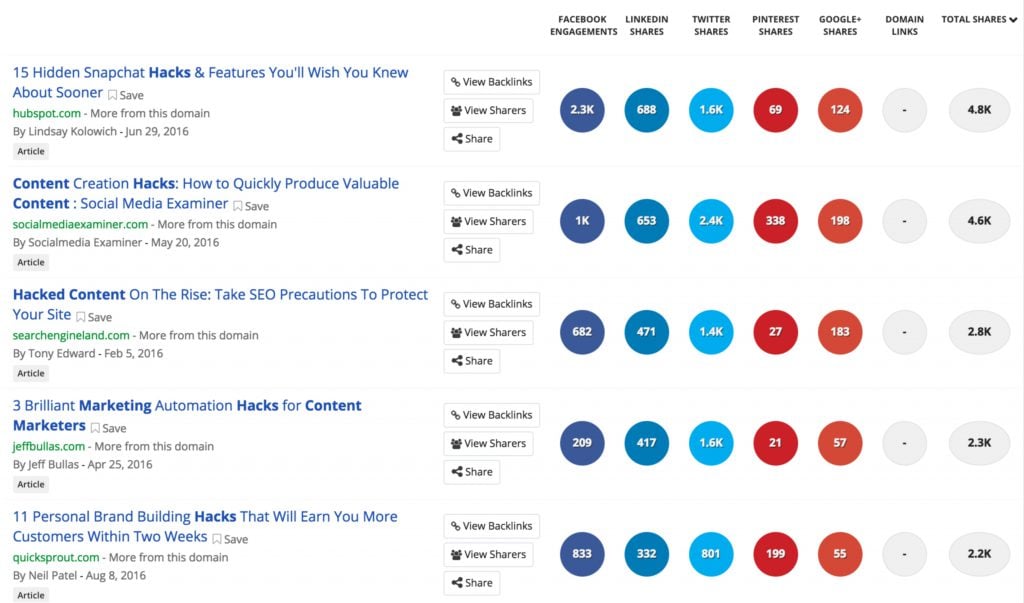You are always betting your idea will work and will make people link to you. Once I publish that piece of content, I can offer it to the same sites that linked to the Forbes article to get them to link to my content. With these ideas, we can create a new piece of content, and as we did in the previous hack, and make it better. If you do the same, you will be able to hack the search engine results. You need to make them come to your site. What if you created a content upgrade for these blogs? Publish More Often Without Creating New Content So far in this article, I have shown you how to find content that works better and gets you shares and links. Create an ebook for lead generation for their article “The 7 Step Guest Posting Process to Guarantee Email List Growth.” Create a slide deck presentation for their “Email Marketing for Ecommerce: 12 Essential Strategies to Build Your List” article. For instance, you can repurpose a piece of content, use it for guest posting while optimizing for links or shares (based on your analysis), and finally, offer a content upgrade to get more people to visit your site. That’s what this article is all about: hacking your content marketing for the best results possible.

Developing a content marketing strategy that works is hard. You need to understand your audience very well. You also need to consistently create high-quality content, so you can get people to share and link your content, all with the hopes of getting people to visit your site. The only downside is this process takes a lot of time. And even if you do everything right, you may not get the traffic you need.
What if there was a way to cut through these problems and get the results you want? Fortunately, there are not one, but seven ways to do so. Below are seven growth hacks to improve your content marketing and ignite your site’s traffic. (And be sure to check out the bonus resource at the end of this article with a checklist of all the things you need to do to implement each hack.)
(And be sure to check out the bonus resource at the end of this article with a checklist of all the things you need to do to implement each hack.)
1. Discover Which Content Will Get You Inbound Links
In the past 10 years, Google has made many changes to its ranking algorithm. These changes have had many goals and effects, but the most important one was to change the way pages ranked.
Up until Panda (the first big algorithm change made in February 2011), many sites were able to rank their pages just by getting a lot of low-quality links. This decreased the quality of Google’s results. Many things were said after those changes were made, from “SEO is dead” to “content is king.”
Despite all these changes, links still matter. They are considered by many SEO experts as one of the most important ranking factors. However, not every link is worth the same. Their quality is what matters now, not their volume. And since there aren’t that many high-quality sites out there that easily link out to other sites, it’s hard to get them.
Today, there’s only one way to get high-quality links: You need amazing content that’s link-worthy. (highlight to tweet) With this content, you need to make high-quality sites link to your site. To do that, you need to know how to reach the people that run those sites to make them link to you.
None of this is easy. It takes a long time to develop the skills to do it. But still, even if you do everything right, those people may not find your content link-worthy. You are always betting your idea will work and will make people link to you.
As it turns out, there’s a better way to get inbound links to your content, and that’s what this hack is all about. The idea is to reverse engineer content that already has gotten lots of links, create a similar yet better piece of content, and then promote it to the people that linked to the original content, so they end up linking to the new and “improved” one. This is the same idea that Brian Dean from Backlinko has made so famous (which he coined as the “Skyscraper technique”).
First, you need to pick a piece of content that ranks well in search engines. In our case, I will search for “how to rank a page in Google.” These are the results that Google showed me:

Most of the sites in the top 10 results are highly authoritative sites.
Then, I took each of these results and pasted them onto Open Site Explorer (OSE, for short). After analyzing the result with the OSE, I found that the Forbes article “10 Ways To Improve Your Google Rank” has 138 inbound links that come from 52 domains, some of which belong to high-authority sites.

With this data, I now know that an article like the one from Forbes is link-worthy. Thus, I can create a piece of content that is similar to but better than the Forbes one. Once I publish that piece of content, I can offer it to the same sites that linked to the Forbes article to get them to link to my content.
It’s not easy to find great opportunities, but if you take your time and do enough searches, you will find unique link-worthy content opportunities.
2. Find Content Your Readers Will Share
If it’s hard to make people link to your content, then it’s almost as hard to make them share it. Every second, social media users publish 216 thousand Instagram posts and 217 thousand tweets. How can you make someone stop in their tracks, skim your content, and make it worthy of their retweet or like?
One theory focuses on designing a piece of content to make it more likely for it to go “viral.” This theory, developed by Jonah Berger, author of the book Contagious, explains that there are six principles of viral marketing:
- Social Currency
- Triggers
- Emotion
- Public
- Practical Value
- Stories
But even if you add all these elements to your content, people still may not share it. At the end of the day, it’s hard to predict what people will find share-worthy. Remember, there’s way too much information going on every minute.
However, there’s a way to hack this problem. This hack uses a competitive intelligence tool called Buzzsumo to reverse engineer a piece of content that already has a lot of shares. As you’ll see, it’s an adapted version of the previous hack.
First, go to Buzzsumo, and make a search using a broad keyword. In this case, we will put the word “content marketing hacks”. This is what Buzzsumo returned:

As you can see, many pieces of content related to this keyword have gotten over one thousand shares in the past year.
With this data, we can uncover several patterns that give us some insight on what people like sharing. In this example, we can see people have shared social networks hacks (in this case, Snapchat), hacks to create content faster, and hacks for marketing automation.
With these ideas, we can create a new piece of content, and as we did in the previous hack, and make it better. For instance, we could create an article called, “10 Hidden Hacks for Instagram Stories that You Didn’t Know Existed.”
After we publish the article, we’d promote it as we would in any other article. However, the key in this hack relies on reaching out to the same influencers that shared the similar but less amazing article before. After all, if those people found the previous article interesting, it’s because they probably liked it and would consider sharing something just as good.
3. Make Email Signups a No-Brainer
“The money is in the list,” or so says one of the most famous phrases of the online marketing world. Despite being cliché, it’s right—according to the Digital Marketing Association from the UK, the ROI of email marketing is 3800 percent. In other words, for every dollar you spend on email marketing, you get on average $38 back.
Unfortunately, it’s not as easy to get people to subscribe to your email list as you may think. As of late 2016, there were over 1.1 billion websites in the world, 74 million of which used WordPress (making it the most famous blogging platform in the world). Though many of these WordPress sites probably aren’t active anymore, we can safely assume over 30 million blogs exist as of today (around half the total number), many of which have an email list.
The question, then, is not just, “How can you make people subscribe to your list?” Rather, the most important question to ask yourself is, “How do you make your list stand out from the other million lists out there?”
First of all, you would need to provide enough value for them to want to subscribe to your newsletter. But how do you do that? One highly effective way is by offering lead magnets: ebooks or free email courses that teach them something useful.
But there’s another tactic that’s even more relevant and makes it easier for your readers to subscribe to your list: content upgrades. Content upgrades are lead magnets that are created on top of a given piece of content to provide extra value to the reader. To implement this is hack, you only need to follow a very straightforward set of steps:
- After you write an article, create something extra, like a checklist or a PDF version of the article.
- Package that extra content into an ebook, so people can download it.
- Give that ebook out in exchange for your reader’s email.
…
COMMENTS